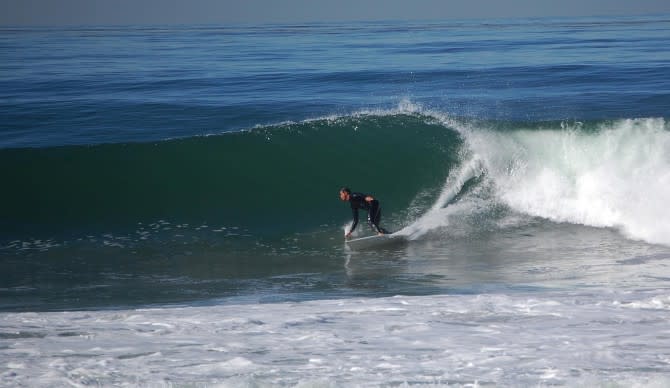Surfrider Wants to Make Tijuana Slough Surfable Again
Ask any San Diego surfer and they’ll heed you some common sense advice: “Don’t even think about surfing Tijuana Slough.” The last couple miles of beach before California runs into the Mexican border is a nightmare of untreated sewage and chemical runoff brought to the ocean by the Tijuana River. It’s a problem that is exacerbated by heavy rain events, like the ones that happened this winter. Paddling out is a fool’s errand.
As far back as the 1930s, Tijuana Slough was once a proving ground of sorts for surfers looking to ride big winter swells. Now it’s a barren stretch of beach with waves that go unridden. However, Surfrider is looking to bring surfing back. The organization has launched a new campaign and petition to clean up Tijuana Slough aimed at acquiring appropriate government support and funding to solve the problem. They’re calling it the “biggest health crisis you’ve never heard of.” The petition, which strives to get 10,000 signatures, had achieved around 4,000 at the time the story was published.
Surfrider’s plan of action includes getting federal funding for a “Comprehensive Infrastructure Solution.” The potential paths cited to gain and apply such funding include “supplemental funding for the International Boundary and Water Commission (IBWC), appropriations at the full authorized level for the EPA Border Water Infrastructure Program, and annual funding through the Department of State for ongoing maintenance of the IBWC.”
Sewage management problems exist on both sides of the border. On the Mexican side, a water treatment plant in San Antonio de los Buenos has been in disrepair for several years and spews untreated sewage into the Tijuana River, which flows into the slough. In January of this year the Mexican government launched a project to fix the plant, but it’s been received with “tentative optimism” due to the fact it’s an election year in Mexico and a new administration could shake up the project. And on the northern side of the border, the South Bay International Wastewater Treatment Plant, built in 1996, recently received $300 million in funding for expansion, but half of that funding had to be allocated to overdue maintenance before any expansion could take place.

The negative health effects of the slough’s pollution have been reaching those who don’t even enter the ocean. A 2023 study found that bacteria from the Tijuana River was becoming airborne from ocean spray and returning to land. Doctors near the border even speculate that there is a correlation between heavy runoff and a surge in illnesses in people who hadn’t been in the ocean.
For those who frequent the San Diego-Tijuana border and know the extent of the pollution, cleaning up this mess may sound like a pipe dream. It’s a problem that is complicated in that it requires the cooperation of two nations and their varying levels of governmental bodies and protocols. But the change has to start somewhere. And oh how it would be nice to reopen a couple miles of surfing beach to spread out those San Diego crowds, and, of course, restore a healthy ecosystem.
The post Surfrider Wants to Make Tijuana Slough Surfable Again first appeared on The Inertia.

